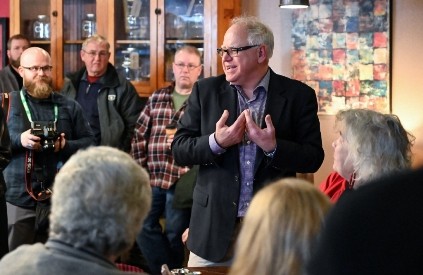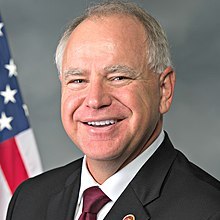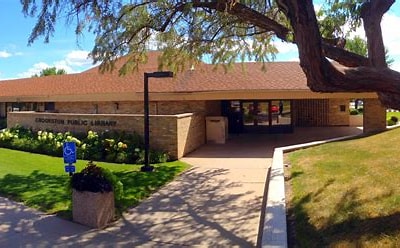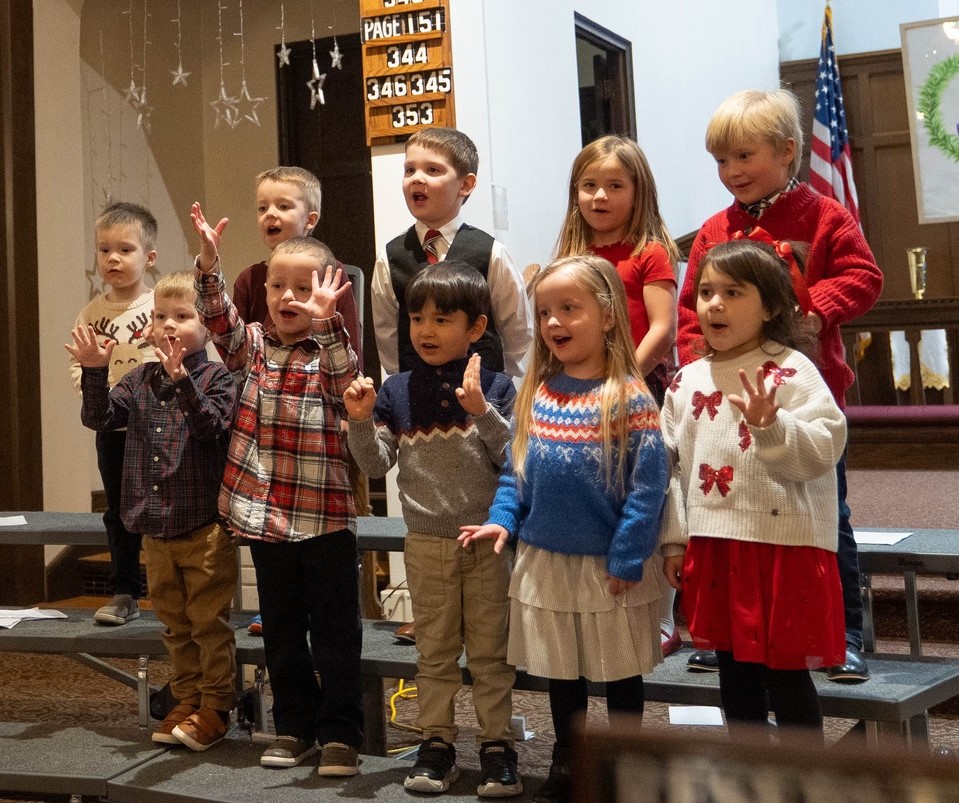Following the advice of public health experts, Governor Tim Walz today signed Executive Order 20-78, extending the COVID-19 peacetime emergency that gives the state flexibility in responding to rapidly-evolving issues stemming from COVID-19. Including Minnesota, 49 out of 50 states remain in a COVID-19 state of emergency.
“COVID-19 continues to present an unprecedented and rapidly evolving challenge to our state,” said Governor Walz. “The peacetime emergency has provided us tools to save lives and mitigate the devastating impacts of this pandemic. As cases skyrocket in other states, we can’t let our guard down now.”
“The emergency is not over,” said Lt. Governor Peggy Flanagan. “Minnesotans are relying on us to respond in real-time to a virus that we are still learning more about. We cannot end necessary protections that are saving lives and keeping people safe.”
Minnesotans’ health and safety are the Governor’s first priority. Since the Governor declared a peacetime emergency, Minnesota has taken strong steps to respond to and provide relief for COVID-19 by enhancing protections for veterans in our veterans’ homes, activating the National Guard to assist in relief efforts, partnering with Mayo Clinic and the University of Minnesota to launch a statewide testing strategy to test all symptomatic people, and providing economic relief and stability to those impacted by the pandemic.
Below are more examples of how the peacetime emergency has allowed Minnesota to effectively and efficiently respond to the COVID-19 pandemic.
Coordinated Emergency Response
During the peacetime emergency, the State Emergency Operations Center (SEOC) remains fully activated and staffed either physically or virtually by all state agencies and several volunteer organizations to keep Minnesotans safe and coordinate efforts to provide essential services and information during the COVID-19 pandemic.
- The SEOC received more than $1.7 million in supplemental emergency funding from the Federal Emergency Management Agency (FEMA). The SEOC is redistributing the funding to local emergency managers for their COVID-19 response expenses.
- Logistics staff in the SEOC are working with FEMA to prepare for the movement of supplies from the Strategic National Stockpile.
- The SEOC continues to support Minnesota National Guard efforts to conduct testing at long-term care facilities in the state.
- SEOC staff is working with the State Healthcare Coordination Center to monitor critical care capacities at hospitals across Minnesota.
Testing
The peacetime emergency allowed the State to broker a breakthrough testing deal. In April, Governor Walz, representatives of the state’s health care delivery systems, the Mayo Clinic, and the University of Minnesota launched a statewide testing strategy to test all symptomatic people, isolate confirmed cases, and expand public health surveillance tools. Since then we have built capacity and increased testing and tracing to help improve control of this pandemic and support the safe re-opening of society.
The partnership significantly improved control of COVID-19 in Minnesota through increased public health surveillance and research. The Minnesota Department of Health and its public health partners simultaneously expanded contact tracing efforts for better control of the infection. Additionally, the partnership has helped identify and respond to emerging “hotspots” of infection. We have:
- Established free testing at six National Guard Armory locations across Minnesota throughout the Memorial Day holiday weekend.
- Reached the milestone of developing a daily capacity of 20,000 COVID-19 molecular tests by July.
- Completed over 700,000 tests to date. As part of the state’s testing command center, the Mayo Clinic and the University of Minnesota are now able to provide additional testing capacity to more than 265 health care organizations across the state.
- Made testing capacity available through the state initiative’s testing command center, which connects the provider with COVID-10 diagnostic testing through Mayo Clinic Laboratories or U of M labs. This supported health care providers when they needed more testing capacity than they had available at their local laboratories, or when an outbreak emerged.
- Deployed this resource for numerous pop-up testing events, including Duluth, Moorhead, St. James, and Faribault, Mower County, and in Minneapolis and Saint Paul following protests and large gatherings in the wake of George Floyd’s death.
Procurement
Without a peacetime emergency, we cannot do procurement and contract tracing quickly. This is a critical component of our ability to respond nimbly to rapidly changing conditions. More specifically, the peacetime emergency authorities allow us to work with nontraditional vendors and to execute procurement contracts at exceptional speed, without lengthy bidding processes. Without this ability, the normal bidding processes can take 90 days or more. These are the authorities that have allowed us to buy critical supplies, initiate contracts for testing, make emergency hires, and assist farmers with depopulation.
Working without the peacetime emergency authorities would create a significant challenge and slowdown in the state’s response efforts and ability to provide emergency aid across the state quickly – particularly with the current number of deaths and new cases.
The peacetime emergency also allowed the Administration to quickly build out an Alternate Care Site in Roseville. The facility will be used to address hospital capacity issues to provide low-level medical care during the COVID-19 pandemic.
Health and Human Services
The State been able to quickly respond to the COVID-19 crisis and largely keep our health and human services systems intact, ensuring access to our most vulnerable populations through the authorities granted by the Governor’s emergency powers. Most importantly, people have not had to choose between risking their health or foregoing the critical services they need. We have:
- Expanded inpatient bed capacity by 2,287 beds across the state while also ensuring that no Minnesotan loses their health care or other benefits during this time.
- Waived program requirements to conform with federal requirements to receive an enhanced federal match for public programs. This resulted in over $50 million a month in federal funding.
- Created flexibilities for critical services such as nursing homes, mental health services, disability services, and child care centers to operate in the new world of COVID-19.
- Allowed critical services to be delivered through telemedicine and have provided flexibility in licensing requirements that would otherwise make these services impossible to access during these times.
- Allowed Minnesotans, through modifications and waivers, to stay home and stay safe, a critical need that is just as important today as it was when we issued the emergency powers four months ago.
- Changed, reduced, and postponed various licensing requirements for health-related and first responder boards, to help those professionals focus on their jobs.
- Allowed out of state mental health providers to continue seeing patients in Minnesota. This is especially important to college students who were sent home from school but wanted to continue treatment.
Education
The shift to distance learning was a necessary precaution to protect students, their families, educators, and the surrounding communities. Closing schools for eight days to allow educators to prepare as much as possible allowed them to pivot in a very big way. Through the peacetime emergency, and by working in partnership with the Legislature, we have given our schools the ability to maneuver big changes by providing more funding flexibility and access to technology and maintaining stable childcare for essential workers. We have:
- Provided flexibility for fund transfers that allow districts and schools to remain as whole as possible.
- Placed a focus on finding creative ways to deploy all staff in school buildings, at congregate sites, on school buses, and through telework. Creating funding flexibilities also facilitated this creativity like allowing special education paras to help with meal prep and distribution.
- Helped schools continue to provide daily meals to students during a time of distance learning when students are not in school buildings.
- Ensured care for children of critical workers – from healthcare providers to first responders to grocery workers – is not a barrier for those workers to continue their important roles on the frontlines.
- Authorized and directed the Commissioner of Education to provide a safe and effective summer learning environment for Minnesota’s students.
- Announced a public-private partnership of philanthropic and business leaders from across Minnesota that aims to meet the technology and connectivity needs of families with school-aged children. ConnectedMN’s goal is to bring technology and internet access to students across the state, especially communities most in need, including Indigenous students and students of color, students from low-income families, and families residing in rural Minnesota.
Jobs & Economic Security
The uncertainty around the COVID-19 pandemic creates financial instability for many Minnesotans. Due to the peacetime emergency, the state has been able to provide housing support, assistance to small businesses, and worker support. We have:
- Suspended eviction proceedings during the COVID-19 peacetime emergency. Loss of housing is catastrophic at any time, and during the COVID-19 pandemic, this loss endangers the health and well-being of all Minnesotans.
- Moved to ensure that eligible laid-off workers were able to quickly access Unemployment Insurance (UI) benefits and that businesses’ “experience ratings” would not be impacted when former workers were provided UI benefits during the pandemic.
- Protected workers from unsafe working conditions and retaliation during the COVID-19 peacetime emergency.





